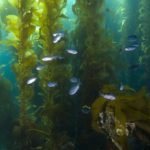There’s so much news about the impact of climate change and global warming on our world and its ecosystems, much of it negative. In April, I joined a panel of writers of environmental mysteries–ecomysteries–at the Left Coast Crime 2022 mystery convention. Our books address serious issues, so much so that one audience member asked, “Is there any reason at all for hope?”
My answer? You bet! Humans have created the undoubtedly challenging problems we face, yes. However, creative and tenacious humans are working on solutions. I’ve mentioned a few instances below and would love to hear about others you know of.
Hope beneath the earth: Tucson is part of the Central Arizona Project, a 336-mile system to bring Colorado River water to central and southern Arizona. To get drinkable water to Tucson required some innovative thinking, the use of ground water recharging, and extensive conservation efforts. Tucson now uses the same amount of water as we did in the 1980s, with 200,000 more people. More recently, other groups are working with Tucson Water to restore wetlands and some water flow in the Santa Cruz River that once flowed freely in our community. Still others are working to restore the flow of the Tanque Verde Creek in Tucson, by removing destructive and thirsty invasive Arundo donax.
In Arizona and elsewhere many farmers have moved to sustainable farming, making the most efficient use possible of non-renewable resources, and switched to crops that use less water. They’re planting more heritage wheats, for example, that consume 30% less water than modern varieties. Once other farmers learn that there’s a way to conserve energy (save money) and continue their operations, they’re likely to go greener, as well.
 Release the Beavers! Here in southern Arizona, the Watershed Management Group and other organizations are working to restore beavers to the Santa Cruz and San Pedro watersheds. Wiped out by trappers in the 1800s, beavers are now recognized as vital to restoring desert creeks and rivers. Their dams slow water flow and help that water sink into the aquifer below and recharge groundwater. They also create wetland habitats for our diverse Sonoran Desert ecosystem.
Release the Beavers! Here in southern Arizona, the Watershed Management Group and other organizations are working to restore beavers to the Santa Cruz and San Pedro watersheds. Wiped out by trappers in the 1800s, beavers are now recognized as vital to restoring desert creeks and rivers. Their dams slow water flow and help that water sink into the aquifer below and recharge groundwater. They also create wetland habitats for our diverse Sonoran Desert ecosystem.
Hope for the birds: My first novel in the Adventure Calls Ecotouring series, Murder, Sonoran Style, was inspired by a fight over a huge development (28,000 houses) on land near the San Pedro Riparian National Conservation Area, a prime habitat for native and migratory birds. Opponents argued it would deplete the aquifer; proponents touted the favorable impact on the small town of Benson, AZ. I learned about this dispute in 2014 although research shows it began in 2003; it continues now into the fall of 2022, as a variety of environmental groups plead the case for the aquifer.
 Hope from the oceans: Seaweed is better at absorbing CO2 emissions than trees are and scientists and entrepreneurs are working on ways to exploit this capacity. Some are building artificial reefs to restore kelp forests, placing them in areas of the ocean that are cooler, because kelp forests have been diminishing with raising water temperatures. Others are planting kelp and other seaweeds and harvesting it for use as food, in pharmaceuticals, chemicals, and bioplastics. You can even buy seasoning made from kelp flakes.
Hope from the oceans: Seaweed is better at absorbing CO2 emissions than trees are and scientists and entrepreneurs are working on ways to exploit this capacity. Some are building artificial reefs to restore kelp forests, placing them in areas of the ocean that are cooler, because kelp forests have been diminishing with raising water temperatures. Others are planting kelp and other seaweeds and harvesting it for use as food, in pharmaceuticals, chemicals, and bioplastics. You can even buy seasoning made from kelp flakes.

Yay, Tigers! Globally, the Word Wildlife Fund recently reported that, “In an amazing show of progress for wildlife, Nepal is on track to become the first of the world’s countries to double its wild tiger population since 2010. According to results from the country’s most recent tiger survey, there are now an estimated 235 wild tigers, nearly twice the number of tigers counted in 2009.
Nepal is one of 13 tiger range countries that pledged to double the number of tigers in the wild by 2022—part of an initiative known as TX2.
Yes, there’s hope. With hard work, there’s more than hope.